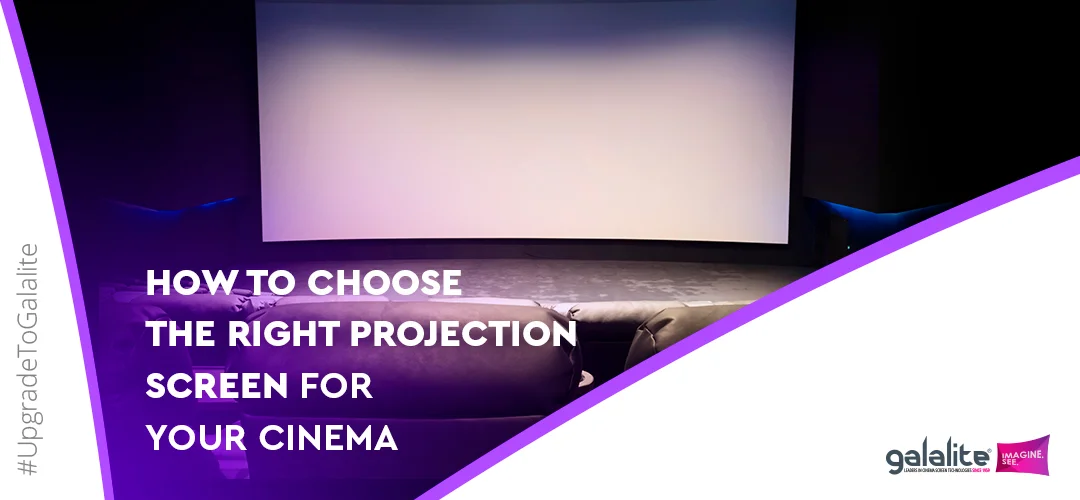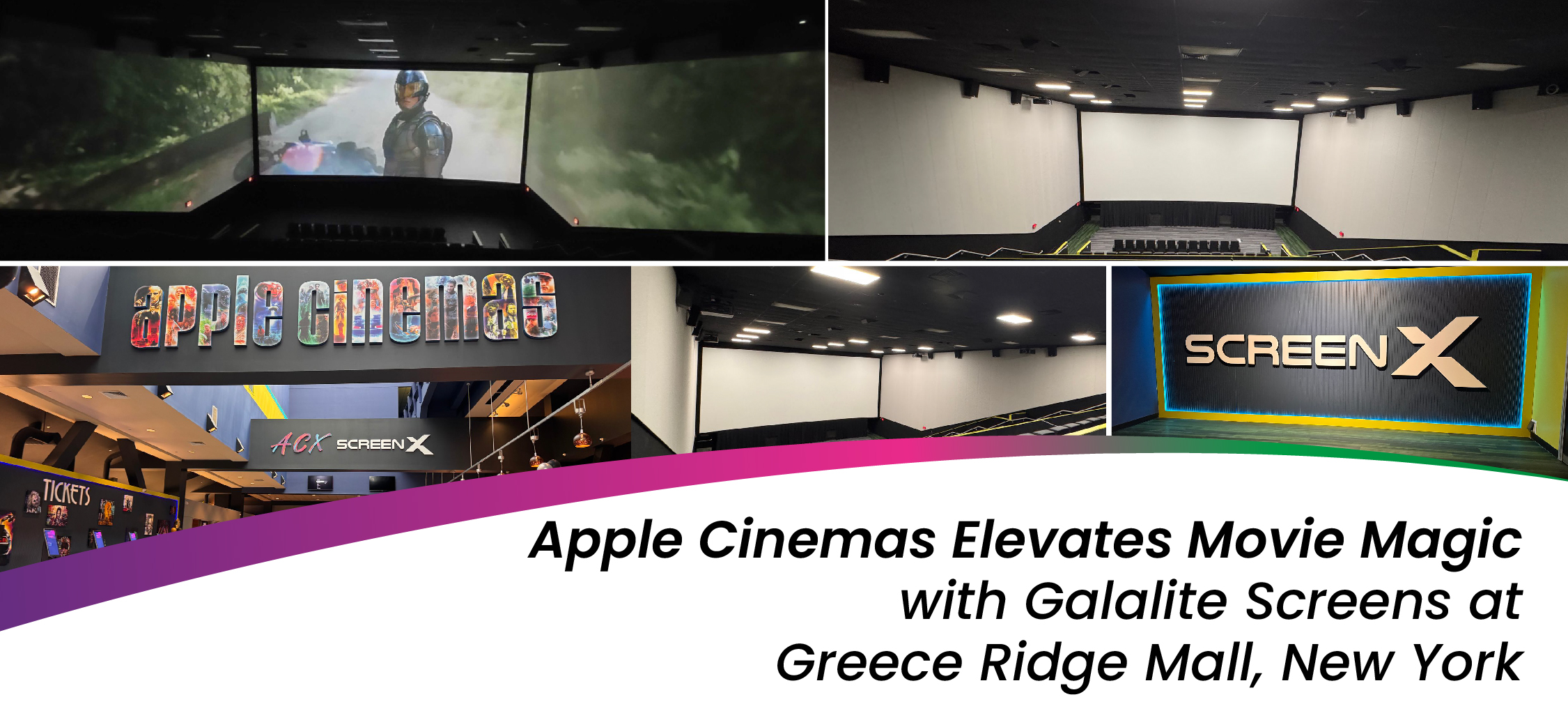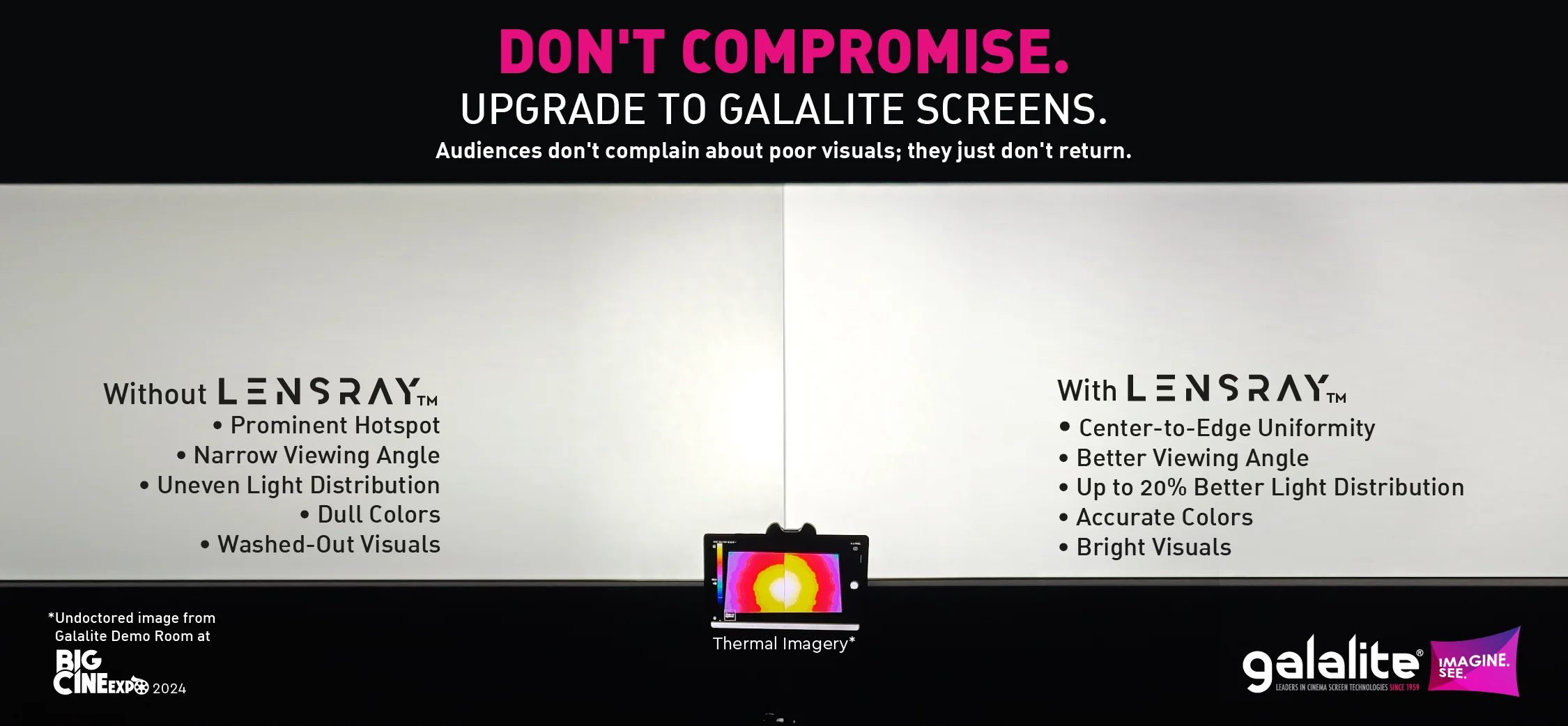
A great movie-watching experience depends on the right cinema screen just as much as it does on the sound and the seats. To guarantee that your audience has an immersive experience and makes full use of the material, selecting the appropriate movie screen for your cinema is crucial. In this article, we’ll talk about the various kinds of cinema screens that are out there and the things to think about when selecting the best one for your cinema.
Types of Cinema Projection Screens:
There are various types of projection screens available, each with its own set of characteristics. Some of the most common types of cinema projection screens include:
White Screens: White screens are the most common type of cinema screen. They are versatile and work well with most projectors. Galalite’s Matte White is a quality front projection screen that has a widespread and balanced screen gain of 1, making it ideal for viewing films. It is whiter than any other matte white screen available on the market and has a longer lifespan due to its unique formulation.
Galalite’s Digilite is a versatile projection screen enhanced for active 3D applications and digital 2D projections. It comes in various gains, like 1.4, 1.8, and 2.2, and is compatible with HFR technology. Its smooth surface boosts focus capabilities, making movies more enjoyable to watch.
Silver Screens: Silver screens offer essential polarization maintenance for 3D viewing, providing an added advantage of optimal performance even with lower light output projectors. They are known for their high contrast and brightness, making them ideal for 3D movies. Galalite’s Prism 3D is a perfect silver projection screen that supports passive 3D projection using polarized light and provides a strong signal-to-noise ratio, enhancing the 3D performance with Galalite’s unique Lensray technology. It also supports 2D projection, making it a versatile option for cinemas. Also, Galalite’s Mirage Screen is a 2D and 3D cinema screen featuring Galalite’s 4th generation screen technology, which brings excellent 3D effects and depth as well as a strong signal-to-noise ratio. Its eco-friendly coating increases the life of the screen and keeps light levels higher for longer. It is also compatible with 2K, 4K.
Factors to consider while choosing the right screen for your cinema:
When choosing the right screen for your cinema, there are several factors to be considered. Listed below are some of the most important factors:
Cumulative Screen Gain: Screen gain refers to the measurement of a projector screen’s brightness, comparing the centre to the edges. As viewers shift their angle, the brightness of the image diminishes, dropping by up to 50% at certain angles, impacting off-centre viewers. Higher gain screens project a brighter centre but less brightness at the edges due to narrower reflective angles, resulting in hot-spotting. Galalite’s cumulative gain unit measures screen gain on nine portions of the screen, promoting transparency and aiding cinema owners in screen selection. Galalite’s Lensray Technology utilizes micro-lens arrays to reduce image noise, improve brightness uniformity, eliminate distortion, and minimize variations in colour and brightness. The ultimate goal is to provide an ideal viewing experience, enhance image quality, and increase profitability for cinema exhibitors.
Screen Gain: The screen gain is the measure of a screen’s reflectivity. The higher the gain, the more the light gets reflected back to the viewer, which results in a bright image. But, a higher gain can also result in a narrower viewing angle or hot-spotting.
Galalite’s Mirage XDL 1.2 is the world’s lowest gain cinema projection screen, specially crafted to reduce speckle in laser projections. It maximizes the black levels on-screen, offering a brilliant movie-watching experience for viewers by promising them unrivalled clarity. Mirage XDL 1.2 is an ideal screen for current RGB laser projections that promote next-generation screens.
Aspect Ratio
The aspect ratio is an important factor to consider when choosing a cinema screen, as it determines the size and shape of the projected image. There are various aspect ratios to choose from, each suitable for specific applications. In practice, cinemas typically accommodate two main aspect ratios: the “scope” aspect ratio of 2.39:1, centered within a container with maximum width, and the “flat” aspect ratio of 1.85:1, centered within a container with maximum height. These aspect ratios dictate the image sizes for different resolutions, as shown below:
4K Resolution:
Scope 2.39:1 – 4096 horizontal pixels, 1716 vertical pixels
Flat 1.85:1 – 3996 horizontal pixels, 2160 vertical pixels
2K Resolution:
Scope 2.39:1 – 2048 horizontal pixels, 858 vertical pixels
Flat 1.85:1 – 1998 horizontal pixels, 1080 vertical pixels
These aspect ratios and corresponding resolutions are standardized to ensure consistent display and visual experiences in cinemas.
Specific Needs of Your Cinema
It is critical to consider the specific needs of your cinema when selecting a cinema screen. Different cinemas may have specific requirements, such as screen compatibility with 3D projections. In contrast, others may prioritize image quality over other factors.
Hence, selecting the right screen for your cinema is crucial for providing an enjoyable movie-watching experience for your audience.
Galalite understands these diverse needs and offers a range of cinema screens with varying gain and features to cater to the specific requirements of different cinemas.
FAQ’s
How do I choose the right projection screen for my cinema?
Consider factors like screen gain, viewing angles, ambient light, and projector type to ensure the best visual performance.
What is screen gain, and why is it important?
Screen gain measures reflectivity. Higher gain screens enhance brightness, while lower gain provides wider viewing angles and better uniformity.
Which screen material is best for cinema projection?
The best material depends on your setup—matte white for uniform brightness, silver for 3D projection, and acoustically transparent for immersive sound.
How does ambient light affect screen selection?
High ambient light requires high-gain screens or ALR (ambient light rejecting) screens to maintain image clarity and contrast.
What size screen is ideal for a cinema?
The screen size should be based on auditorium dimensions, seating distance, and aspect ratio to ensure an immersive experience.
Related articles



